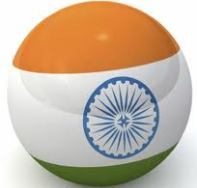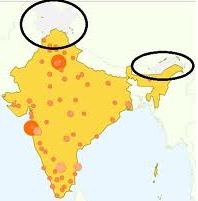For the systemic growth of the Smart Grid in the country, India Smart Grid Task Force and India Smart Grid Forum have been set up under the aegis of the Ministry of Power. The main functions of the Smart Grid Task Force is to ensure awareness, co-ordination and integration of the diverse activities related to Smart Grid technologies, practices and services for Smart Grid Research and Development; Co-ordinate and integrate other relevant inter-governmental activities, Collaborate on interoperability frame work, Review and validate the recommendations from Smart Grid Forum etc. It is an Inter-Ministerial Group and will serve as Government’s focal point for activities related to smart grid.
Indian Current Affairs | Current Affairs India - November 2011
27 Nov 2011
By
Admin
Related Posts with thumbnails for bloggerblogger widgets
Continue reading..
General Studies Online | Corporate Social Responsibility in India
26 Nov 2011
By
Admin
Corporate Social Responsibility (CSR) is defined as the way companies integrate social, environmental, and economic concerns into their values and operations in a transparent and accountable manner. The goal of CSR is to embrace responsibility for the company's actions and encourage a positive impact through its activities on the environment, consumers, employees, communities, stakeholders and all other members of the public sphere. In recent years CSR is increasingly becoming a part of a large number of companies. It is becoming an important activity for businesses throughout the globe. Basically, CSR means that a company's business model should be socially responsible and environmentally sustainable. By socially responsible it means that the company's activities should benefit the society and by environmentally sustainable it means that the activities of the company should not harm the environment.
Related Posts with thumbnails for bloggerblogger widgets
Continue reading..
Science and Technology | Science and Technology News - November 2011
By
Admin
Drupal is a free, open source social publishing platform – that enabled the survival of famous news website of Al Jazeera amid the escalating pressure; besides latching global governments onto its services. Over 2 per cent of all websites worldwide, from blogs to corporate, political and government sites use Drupal as their back-end system. This includes the United States government's official website, the www.whitehouse.gov. It is a software package that allows you to organise, manage and publish content, with endless customisation; Drupal is used by millions today. And, India is now as much a part of this online revolution. Various government organisations, including the Ministry of Communication and Information Technology and the Indian Council of Agricultural Research, have adopted Drupal as their communication platform over the past year.
Related Posts with thumbnails for bloggerblogger widgets
Continue reading..
UNESCO-Madanjeet Singh Prize for the Promotion of Tolerance and Non-Violence
By
Admin
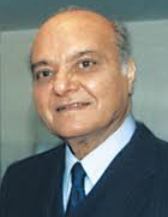 The UNESCO-Madanjeet Singh Prize for the Promotion of Tolerance and Non-Violence is dedicated to advancing the spirit of tolerance in the arts, education, culture, science and communication. It is awarded every two years to individuals or institutions for outstanding contributions to the promotion of tolerance and non-violence. The Prize was created in 1995 on the occasion of the 125th anniversary of the birth of the Mahatma Gandhi, thanks to the generosity of the Indian writer and diplomat Madanjeet Singh. Madanjeet Singh is an Indian artist, writer, former diplomat and philanthropist. Since 2000 he has been a UNESCO Goodwill Ambassador. He created the South Asia Foundation in 2000 as a regional youth movement and it has now grown to have chapters in eight countries. The South Asia Foundation (SAF) has offered scholarships to South Asian students under various disciplines in its 12 UNESCO Madanjeet Singh Institutions of Excellence.
The UNESCO-Madanjeet Singh Prize for the Promotion of Tolerance and Non-Violence is dedicated to advancing the spirit of tolerance in the arts, education, culture, science and communication. It is awarded every two years to individuals or institutions for outstanding contributions to the promotion of tolerance and non-violence. The Prize was created in 1995 on the occasion of the 125th anniversary of the birth of the Mahatma Gandhi, thanks to the generosity of the Indian writer and diplomat Madanjeet Singh. Madanjeet Singh is an Indian artist, writer, former diplomat and philanthropist. Since 2000 he has been a UNESCO Goodwill Ambassador. He created the South Asia Foundation in 2000 as a regional youth movement and it has now grown to have chapters in eight countries. The South Asia Foundation (SAF) has offered scholarships to South Asian students under various disciplines in its 12 UNESCO Madanjeet Singh Institutions of Excellence.
Related Posts with thumbnails for bloggerblogger widgets
Continue reading..
International Current Affairs | International Current Events November 2011
By
Admin
World Bank has warned that Afghanistan could face economic crisis if international assistance is abruptly cut as foreign combat forces are withdrawn by 2014. The forecast released by the World Bank says that the war-ravaged nation will need billions of dollars in aid for at least a decade. The release says Afghanistan this year received 15.7 billion dollar in aid which is more than 90 percent of its total public spending. The World Bank has estimated that Afghanistan ’s domestic revenues are expected to increase from 10 percent of GDP in 2011 and to 17.5 percent by 2021. But this rise is dependent on the opening of some mining facilities, efficient tax collection and the security situation. The Afghan government has pinned much of its hopes on massive copper, iron and other mineral deposits. It is estimated that exploiting those resources may bring in about 3 trillion dollar but this would take long time.
Related Posts with thumbnails for bloggerblogger widgets
Continue reading..
Carbon Disclosure Project | Carbon Disclosure Project in India
By
Admin
 The Carbon Disclosure Project (CDP) is a UK based organisation which works with shareholders and corporations to disclose the GHG emissions of major corporations. Over 3,000 organisations from more than 60 countries round the world now measure and disclose their greenhouse gas emissions, water management and climate change strategies through CDP to set reduction targets and make performance improvements. This data is made available for use by a wide audience including institutional investors, corporations, policymakers and their advisors, public sector organisations, government bodies, academics and the public. The Carbon Disclosure Leadership Index (CDLI), an initiative by CDP, recognises organisations meeting outstanding standards of transparency and comprehensiveness of GHG reporting and analysis. The disclosure is a measure of the companies’ understanding of the risks, effects on climate change and ability to capture good quality of data.
The Carbon Disclosure Project (CDP) is a UK based organisation which works with shareholders and corporations to disclose the GHG emissions of major corporations. Over 3,000 organisations from more than 60 countries round the world now measure and disclose their greenhouse gas emissions, water management and climate change strategies through CDP to set reduction targets and make performance improvements. This data is made available for use by a wide audience including institutional investors, corporations, policymakers and their advisors, public sector organisations, government bodies, academics and the public. The Carbon Disclosure Leadership Index (CDLI), an initiative by CDP, recognises organisations meeting outstanding standards of transparency and comprehensiveness of GHG reporting and analysis. The disclosure is a measure of the companies’ understanding of the risks, effects on climate change and ability to capture good quality of data.
Related Posts with thumbnails for bloggerblogger widgets
Continue reading..
India After Independence
By
Admin
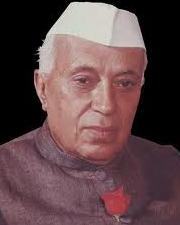 When India became independent in August 1947, it faced a series of very great challenges. As a result of Partition, 8 million refugees had come into the country from what was now Pakistan. These people had to be found homes and jobs. Then there was the problem of the princely states, almost 500 of them, each ruled by a maharaja or a nawab, each of whom had to be persuaded to join the new nation. The problems of the refugees and of the princely states had to be addressed immediately. In the longer term, the new nation had to adopt a political system that would best serve the hopes and expectations of its population.
When India became independent in August 1947, it faced a series of very great challenges. As a result of Partition, 8 million refugees had come into the country from what was now Pakistan. These people had to be found homes and jobs. Then there was the problem of the princely states, almost 500 of them, each ruled by a maharaja or a nawab, each of whom had to be persuaded to join the new nation. The problems of the refugees and of the princely states had to be addressed immediately. In the longer term, the new nation had to adopt a political system that would best serve the hopes and expectations of its population.
India’s population in 1947 was large, almost 345 million. It was also divided. The citizens of this vast land spoke many different languages, wore many different kinds of dress, ate different kinds of food, practised different professions and belonged to different religion and castes. To the problem of unity was added the problem of development. At Independence, the vast majority of Indians lived in the villages. Farmers and peasants depended on the monsoon for their survival. So did the non-farm sector of the rural economy, for if the crops failed, barbers, carpenters, weavers and other service groups would not get paid for their services either. In the cities, factory workers lived in crowded slums with little access to education or health care. Clearly, the new nation had to lift its masses out of poverty by increasing the productivity of agriculture and by promoting new, job-creating industries.
Related Posts with thumbnails for bloggerblogger widgets
Continue reading..
Environmental Sustainability : Climate Summit for a Living Himalayas
24 Nov 2011
By
Admin
Realising that consequences of climate change in Himalayas can no longer be ignored, India along with Bhutan, Nepal and Bangladesh has signed a declaration for wide-ranging collaboration on energy, water, food and biodiversity issues to addresss the threat to their ecosystem. The four nations reached the pact at the two-day "Climate Summit for a Living Himalayas" against the backdrop of melting glaciers, erratic weather conditions, changing rainfall patterns and increasing temperatures impacting the people and wildlife of the region. But agreements on water security – the most contentious are of the Summit declaration – were somewhat diluted.
Related Posts with thumbnails for bloggerblogger widgets
Continue reading..
Indian Freedom Fighters : Surendranath Banerjee
By
Admin
 Sir Surendranath Banerjee (1848–1925) was one of the earliest Indian political leaders from Calcutta. He founded the Indian National Association and later became a senior leader of the Indian National Congress. He was also known as Rashtraguru. After graduating from the University of Calcutta, he traveled to England in 1868, along with Romesh Chunder Dutt and Behari Lal Gupta to compete in the Indian Civil Service examinations. He cleared the competitive examination in 1869, but was barred owing to a dispute over his exact age. After clearing the matter in the courts, Banerjee cleared the exam again in 1871 and was posted as assistant magistrate in Sylhet. However, Banerjee was dismissed soon from his job owing to racial discrimination. Banerjee went to England to protest this decision, but was unsuccessful. After returing to India, he founded the Indian National Association with Anandamohan Bose, one of the earliest Indian political organization of its kind, in 1876. He used the organization to tackle the issue of age-limit for Indian students appearing for ICS examinations. He condemned the racial discrimination perpetrated by British officials in India through speeches all over the country, which made him very popular.
Sir Surendranath Banerjee (1848–1925) was one of the earliest Indian political leaders from Calcutta. He founded the Indian National Association and later became a senior leader of the Indian National Congress. He was also known as Rashtraguru. After graduating from the University of Calcutta, he traveled to England in 1868, along with Romesh Chunder Dutt and Behari Lal Gupta to compete in the Indian Civil Service examinations. He cleared the competitive examination in 1869, but was barred owing to a dispute over his exact age. After clearing the matter in the courts, Banerjee cleared the exam again in 1871 and was posted as assistant magistrate in Sylhet. However, Banerjee was dismissed soon from his job owing to racial discrimination. Banerjee went to England to protest this decision, but was unsuccessful. After returing to India, he founded the Indian National Association with Anandamohan Bose, one of the earliest Indian political organization of its kind, in 1876. He used the organization to tackle the issue of age-limit for Indian students appearing for ICS examinations. He condemned the racial discrimination perpetrated by British officials in India through speeches all over the country, which made him very popular.
Related Posts with thumbnails for bloggerblogger widgets
Continue reading..
Indian Freedom Fighters : W C Banerjee
By
Admin
Womesh Chandra Banerjee (1844 – 1906) was an Indian politician from Calcutta and the first president of Indian National Congress. After graduating in Law from Middle Temple, London, he became the most sought barrister in the High Court of Calcutta. In 1883 he defended Surendranath Banerjee in the famous Contempt of Court Case against him in the Calcutta High Court. He founded East India association in 1865. He presided over the first session of the Indian National Congress held at Bombay in 1885. In the 1886 session held at Calcutta, under the presidency of Dadabhai Naoroji, he proposed the formation of standing committees of the Congress in each province for the better co-ordination of its work. He advocated that the Congress should confine its activities to political matters only, leaving the question of social reforms to other organisations. He was the president of the Indian National Congress again in the 1892 session in Allahabad.
Related Posts with thumbnails for bloggerblogger widgets
International Current Affairs : Indian Map Controversy
23 Nov 2011
By
Admin
The US State Department has removed the inaccurate maps of India and Pakistan from its website which did not reflect the correct boundary and geographical locations. The US State Department spokesperson Victoria Nuland told reporters that they have taken the map of India off the website. She said, the map did contain some inaccuracies and wasn't drawn properly. She said it was unintentional and the US will put up a new map on the website that is accurate. The US State Department removed from its website the maps of both India and Pakistan, as they showed Pakistan Occupied Kashmir (PoK) as part of Pakistan. Earlier Indian Government had lodged a strong protest with the United States State Department.
Related Posts with thumbnails for bloggerblogger widgets
Continue reading..
Indian Freedom Fighters : Pherozeshah Mehta
By
Admin
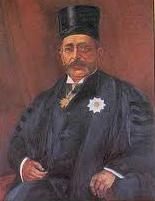
Pherozeshah Mehta (1845-1915) was an Parsi Indian political leader, activist, and a leading lawyer, who was knighted by then British Government in India for his service to the law. His political ideology was moderate and was hence not directly opposed to the crown's sovereignty but only demanded more autonomy for Indians to self-rule. When the Bombay Presidency Association was established in 1885, Pherozeshah Mehta became its president, and remained so for the rest of his years. He encouraged Indians to obtain western education and embrace its culture to uplift India. He contributed to many social causes for education, sanitation and health care in the city and around India. Pherozshah Mehta was one of the founders of the Indian National Congress and its President in 1890, as its president he presided over Indian National Congress session held in Calcutta. In 1910, he started Bombay Chronicle, an English-language weekly newspaper, which became an important Nationalist voice of its time, and an important chronicler of the political upheavals of a volatile pre-independent India.
Related Posts with thumbnails for bloggerblogger widgets
Indian Freedom Fighters : Badruddin Tyabji
By
Admin
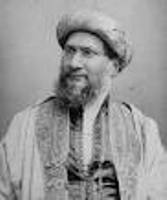 Badruddin Tyabji (1844-1906) was the third President of the Indian National Congress. He was the first Muslim to become the President of Indian National Congress. He passed the London Matriculation and became the first Indian Barrister in Bombay in 1867. He accepted a Judgeship of the Bombay High Court in 1895. In 1902, he became the first Indian to hold the post of Chief Justice in Bombay. He was known as a great Judge and for his courage and impartiality, typically shown by his granting bail to Tilak in a sensational case after it had been rejected thrice by others. Tilak had been charged with sedition by the government for what it saw as provocative articles in his paper, Kesari.
Badruddin Tyabji (1844-1906) was the third President of the Indian National Congress. He was the first Muslim to become the President of Indian National Congress. He passed the London Matriculation and became the first Indian Barrister in Bombay in 1867. He accepted a Judgeship of the Bombay High Court in 1895. In 1902, he became the first Indian to hold the post of Chief Justice in Bombay. He was known as a great Judge and for his courage and impartiality, typically shown by his granting bail to Tilak in a sensational case after it had been rejected thrice by others. Tilak had been charged with sedition by the government for what it saw as provocative articles in his paper, Kesari.
Related Posts with thumbnails for bloggerblogger widgets
Continue reading..
Indian Freedom Fighters : Dadabhai Naoroji
By
Admin
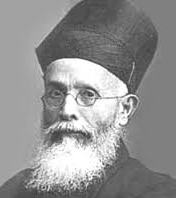 Dadabhai Naoroji (1825–1917) known as the Grand Old Man of India, was a Parsi intellectual, educator, cotton trader, and an early Indian political leader. His book Poverty and Un-British Rule in India brought attention to the draining of India's wealth into Britain. He was a Member of Parliament (MP) in the British House of Commons between 1892 and 1895, and the first Asian to be a British MP. He is also credited with the founding of the Indian National Congress, along with A.O. Hume and Dinshaw Edulji Wacha. In 1867 Naoroji helped establish the East India Association, one of the predecessor organizations of the Indian National Congress with the aim of putting across the Indian point of view before the British public. This Association soon won the support of eminent Englishmen and was able to exercise considerable influence in the British Parliament.
Dadabhai Naoroji (1825–1917) known as the Grand Old Man of India, was a Parsi intellectual, educator, cotton trader, and an early Indian political leader. His book Poverty and Un-British Rule in India brought attention to the draining of India's wealth into Britain. He was a Member of Parliament (MP) in the British House of Commons between 1892 and 1895, and the first Asian to be a British MP. He is also credited with the founding of the Indian National Congress, along with A.O. Hume and Dinshaw Edulji Wacha. In 1867 Naoroji helped establish the East India Association, one of the predecessor organizations of the Indian National Congress with the aim of putting across the Indian point of view before the British public. This Association soon won the support of eminent Englishmen and was able to exercise considerable influence in the British Parliament.
Related Posts with thumbnails for bloggerblogger widgets
Continue reading..
NCERT Standard 8 : Indian Freedom Struggle: 1870s-1947
By
Admin
The various associations in late nineteen century like Poona Sarvajanik Sabha, the Indian Association, the Madras Mahajan Sabha, the Bombay Presidency Association and Indian National Congress worked with the idea that the people should be sovereign – a modern consciousness and a key feature of nationalism. In other words, they believed that the Indian people should be empowered to take decisions regarding their affairs. The dissatisfaction with British rule intensified in the 1870s and 1880s. The Arms Act was passed in 1878, disallowing Indians from possessing arms. In the same year the Vernacular Press Act was also enacted in an effort to silence those who were critical of the government. The Act allowed the government to confiscate the assets of newspapers including their printing presses if the newspapers published anything that was found “objectionable”. In 1883, there was a furore over the attempt by the government to introduce the Ilbert Bill. The bill provided for the trial of British or European persons by Indians, and sought equality between British and Indian judges in the country. But when white opposition forced the government to withdraw the bill, Indians were enraged. The event highlighted the racial attitudes of the British in India.
Related Posts with thumbnails for bloggerblogger widgets
Continue reading..
Awadh in Revolt of 1857 | Summary Settlement of 1856
20 Nov 2011
By
Admin
In 1851 Governor General Lord Dalhousie described the kingdom of Awadh as “a cherry that will drop into our mouth one day”. Five years later, in 1856, the kingdom was formally annexed to the British Empire. The conquest happened in stages. The Subsidiary Alliance had been imposed on Awadh in 1801. By the terms of this alliance the Nawab had to disband his military force, allow the British to position their troops within the kingdom, and act in accordance with the advice of the British Resident who was now to be attached to the court. Deprived of his armed forces, the Nawab became increasingly dependent on the British to maintain law and order within the kingdom.
Related Posts with thumbnails for bloggerblogger widgets
Continue reading..
Deccan Riots of 1875 | Deccan Riots Commission
By
Admin
As British rule expanded from Bengal to other parts of India, new systems of revenue were imposed. The Permanent Settlement was rarely extended to any region beyond Bengal. Since the revenue demand was fixed under the Permanent Settlement, the colonial state could not claim any share of this enhanced income. Keen on expanding its financial resources, the colonial government had to think of ways to maximise its land revenue. So in territories annexed in the nineteenth century, temporary revenue settlements were made. The revenue system that was introduced in the Bombay Deccan came to be known as the
ryotwari settlement
. Unlike the Bengal system, the revenue was directly settled with the ryot. The average income from different types of soil was estimated, the revenue-paying capacity of the ryot was assessed and a proportion of it fixed as the share of the state.
Related Posts with thumbnails for bloggerblogger widgets
Continue reading..
Permanent Settlement by Charles Cornwallis
By
Admin
The Permanent Settlement had come into operation in 1793. The East India Company had fixed the revenue that each zamindar had to pay. The estates of those who failed to pay were to be auctioned to recover the revenue. In those days Raja was a term that was often used to designate powerful zamindars. In 1797 there was an auction in Burdwan (present day Bardhaman). It was a big public event. A number of mahals (estates) held by the Raja of Burdwan were being sold. Since the raja had accumulated huge arrears, his estates had been put up for auction. Likewise over 75 per cent of the zamindaris changed hands after the Permanent Settlement.
Related Posts with thumbnails for bloggerblogger widgets
Continue reading..
Current Affairs India November 2011 | Access to Justice for Marginalized People
19 Nov 2011
By
Admin
The Department of Justice, Ministry of Law and Justice, Government of India is implementing a Project on ‘Access to Justice for Marginalized People’ with support from United Nations Development Programme (UNDP). The Project, being implemented in 7 states (Bihar, Chhattisgarh, Jharkhand, Madhya Pradesh, Orissa, Rajasthan and Uttar Pradesh), aims to strengthen access to justice for the marginalized - particularly women, scheduled castes, scheduled tribes and minorities - by supporting strategies and initiatives that seek to address the barriers they face. The Project focuses, on the one hand, on improving institutional capacities of key justice service providers to enable them to effectively serve the poor and disadvantaged and on the other hand, on directly empowering the poor and disadvantaged men and women to seek and demand justice services. The Project, started in 2009, has completed two years of implementing activities.
Related Posts with thumbnails for bloggerblogger widgets
Continue reading..
Social Reforms of India - Short Notes
By
Admin
Veerasalingam Pantulu
Veeresalingham Pantulu (1848–1919) was a social reformer of Andhra Pradesh. Born in an orthodox Brahmin family, he is widely considered as the man who first brought about a renaissance in Telugu people and Telugu literature. He was influenced by the ideals of Brahmo Samaj particularly those of Keshub Chunder Sen. He got involved in the cause of social reforms. In 1876 he started a Telugu journal and wrote the first prose for women. He encouraged education for women, and started a school in Dowlaiswaram in 1874. He started a social organisation called Hitakarini (Benefactor). He was called the Vidyasagar of the south.
Rokeya Sakhawat Hossain
Rokeya Sakhawat Hossain (1880–1932) was a feminist, prolific writer and a social worker in undivided Bengal in the early 20th century. She is most famous for her efforts on behalf of gender equality and other social issues. She established the first school at Bhagalpur aimed primarily at Muslim girls. Later the school was moved to Culcutta. It remains one of the city's most popular schools for girls and is now run by the state government of West Bengal.
Related Posts with thumbnails for bloggerblogger widgets
Continue reading..
East India Company and Revolt of 1857
18 Nov 2011
By
Admin
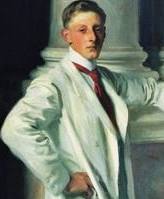 The policies of the East India Company had adverse effect on all sections of Indian people. Since the mid-eighteenth century, nawabs and rajas had seen their power erode. They had gradually lost their authority and honour. The freedom of the rulers reduced, their armed forces disbanded, and their revenues and territories taken away by stages. Many ruling families tried to negotiate with the Company to protect their interests. For example, Rani Lakshmibai of Jhansi wanted the Company to recognise her adopted son as the heir to the kingdom after the death of her husband. Nana Saheb, the adopted son of Peshwa Baji Rao II, pleaded that he be given his father’s pension when the latter died. However, the Company, confident of its superiority and military powers, turned down these pleas. Awadh was one of the last territories to be annexed. In 1801, a subsidiary alliance was imposed on Awadh, and in 1856 it was taken over. Governor-General Dalhousie declared that the territory was being misgoverned and British rule was needed to ensure proper administration.
The policies of the East India Company had adverse effect on all sections of Indian people. Since the mid-eighteenth century, nawabs and rajas had seen their power erode. They had gradually lost their authority and honour. The freedom of the rulers reduced, their armed forces disbanded, and their revenues and territories taken away by stages. Many ruling families tried to negotiate with the Company to protect their interests. For example, Rani Lakshmibai of Jhansi wanted the Company to recognise her adopted son as the heir to the kingdom after the death of her husband. Nana Saheb, the adopted son of Peshwa Baji Rao II, pleaded that he be given his father’s pension when the latter died. However, the Company, confident of its superiority and military powers, turned down these pleas. Awadh was one of the last territories to be annexed. In 1801, a subsidiary alliance was imposed on Awadh, and in 1856 it was taken over. Governor-General Dalhousie declared that the territory was being misgoverned and British rule was needed to ensure proper administration.
Related Posts with thumbnails for bloggerblogger widgets
Continue reading..
Industries- Different Types Based on Size,Ownership and Technology
17 Nov 2011
By
Admin
Industry refers to an economic activity that is concerned with production of goods, extraction of minerals or the provision of services. Industries can be classified on the basis of raw materials, size and ownership. Industries may be agro based, mineral based, marine based and forest based depending on the type of raw materials they use.
Agro based industries : These type of industries use plant and animal based products as their raw materials. Food processing, vegetable oil, cotton textile, dairy products and leather industries are examples of agro-based industries.
Mineral based industries : These are primary industries that use mineral ores as their raw materials. The products of these industries feed other industries. Iron made from iron ore is the product of mineral based industry. This is used as raw material for
the manufacture of a number of other products, such as heavy machinery, building materials and railway coaches.
Related Posts with thumbnails for bloggerblogger widgets
Continue reading..
British East India Company Rule in India | Revenue Generation Methods
By
Admin
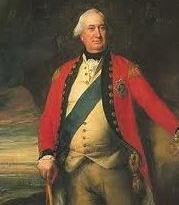 The Company had become the Diwan of Bengal in 1765, but it still saw itself primarily as a trader. It wanted a large revenue income but was unwilling to set up any regular system of assessment and collection. The effort was to increase the revenue as much as it could and buy fine cotton and silk cloth as cheaply as possible. Within five years the value of goods bought by the Company in Bengal doubled. Before 1865, the Company had purchased goods in India by importing gold and silver from Britain. Now the revenue collected in Bengal could finance the purchase of goods for export. Soon it was clear that the Bengal economy was facing a deep crisis. Artisans were deserting villages since they were being forced to sell their goods to the Company at low prices. Peasants were unable to pay the dues that were being demanded from them. Artisanal production was in decline, and agricultural cultivation showed signs of collapse. Then in 1770 a terrible famine killed ten million people in Bengal. About one-third of the population was wiped out.
The Company had become the Diwan of Bengal in 1765, but it still saw itself primarily as a trader. It wanted a large revenue income but was unwilling to set up any regular system of assessment and collection. The effort was to increase the revenue as much as it could and buy fine cotton and silk cloth as cheaply as possible. Within five years the value of goods bought by the Company in Bengal doubled. Before 1865, the Company had purchased goods in India by importing gold and silver from Britain. Now the revenue collected in Bengal could finance the purchase of goods for export. Soon it was clear that the Bengal economy was facing a deep crisis. Artisans were deserting villages since they were being forced to sell their goods to the Company at low prices. Peasants were unable to pay the dues that were being demanded from them. Artisanal production was in decline, and agricultural cultivation showed signs of collapse. Then in 1770 a terrible famine killed ten million people in Bengal. About one-third of the population was wiped out.
Related Posts with thumbnails for bloggerblogger widgets
Continue reading..
British East India Company Rule in India
15 Nov 2011
By
Admin
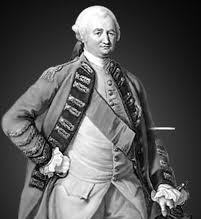 In 1600, the East India Company acquired a charter from Queen Elizabeth I, granting it the sole right to trade with the East. The royal charter, however, could not prevent other European powers from entering the Eastern markets. By the time the first English ships sailed down the west coast of Africa, round the Cape of Good Hope, and crossed the Indian Ocean, the Portuguese had already established their presence in the western coast of India, and had their base in Goa. In fact, it was Vasco da Gama, a Portuguese explorer, who had discovered this sea route to India in 1498. By the early seventeenth century, the Dutch too were exploring the possibilities of trade in the Indian Ocean. Soon the French traders arrived on the scene. The problem was that all the companies were interested in buying the same things. The fine qualities of cotton and silk produced in India had a big market in Europe. Pepper, cloves, cardamom and cinnamon too were in great demand. Competition amongst the European companies inevitably pushed up the prices at which these goods could be purchased, and this reduced the profits that could be earned. The only way the trading companies could flourish was by eliminating rival competitors. The urge to secure markets therefore led to fierce battles between the trading companies.
In 1600, the East India Company acquired a charter from Queen Elizabeth I, granting it the sole right to trade with the East. The royal charter, however, could not prevent other European powers from entering the Eastern markets. By the time the first English ships sailed down the west coast of Africa, round the Cape of Good Hope, and crossed the Indian Ocean, the Portuguese had already established their presence in the western coast of India, and had their base in Goa. In fact, it was Vasco da Gama, a Portuguese explorer, who had discovered this sea route to India in 1498. By the early seventeenth century, the Dutch too were exploring the possibilities of trade in the Indian Ocean. Soon the French traders arrived on the scene. The problem was that all the companies were interested in buying the same things. The fine qualities of cotton and silk produced in India had a big market in Europe. Pepper, cloves, cardamom and cinnamon too were in great demand. Competition amongst the European companies inevitably pushed up the prices at which these goods could be purchased, and this reduced the profits that could be earned. The only way the trading companies could flourish was by eliminating rival competitors. The urge to secure markets therefore led to fierce battles between the trading companies.
Related Posts with thumbnails for bloggerblogger widgets
Continue reading..
Robert Clive in Indian History
14 Nov 2011
By
Admin
 Robert Clive (1725-1774), was one of the creators of British power in India. In his first governorship (1755–60) he won the Battle of Plassey and became master of Bengal. In his second governorship (1764–67) he reorganized the British colony.
Robert Clive (1725-1774), was one of the creators of British power in India. In his first governorship (1755–60) he won the Battle of Plassey and became master of Bengal. In his second governorship (1764–67) he reorganized the British colony.
Bengal had been ruled by Nawabs (Mughal viceroys) of the Mughal emperor, and it was under their protection that the British East India Company carried on its trade. In 1756 a dispute with the British about fortifying Calcutta caused the new nawab of Bengal, Siraj ud-Dawlah, to attack and capture the fort there. Clive was in Madras at that time and
was given command of the relief expedition in Bengal. With 900 Europeans and 1,500 Indians Clive captured Calcutta on Jan. 2, 1757, and forced the nawab to restore the company’s privileges, pay compensation, and allow the British to fortify Calcutta. Clive then contacted Mir Jafar and some others in the Court of Nawab and offered him the throne if he deceives Siraj Ud-Dawlah. Then Clive along with Mir Jafar defeated Siraj ud-Dawlah and his french suppoters in the famous Battle of Plassey on June 23, 1757.Siraj Ud Daulah fled from the field on a camel, securing what wealth he could. But he was soon captured by Mir Jafar's forces, and later executed. Clive established Mir Jafar as Nawab, the price which had been agreed beforehand for his treachery. The victory in Battle of Plassey made Clive the virtual ruler of Bengal.
Related Posts with thumbnails for bloggerblogger widgets
Continue reading..
Current Affairs November 2011 | Shiksha Ka Haq campaign launched
13 Nov 2011
By
Admin
Shiksha Ka Haq launched on National Education Day
Government launched its ambitious Shiksha ka Haq Campaign. The country-wide campaign aims at creating awareness among people about the Right to Education and their entitlement to free and compulsory education. It was launched by Human Resource Development Minister Kapil Sibal and Lok Sabha speaker Meira Kumar at Nuh in the Mewat district of Haryana. Nuh has one of the lowest education performance parameters in the country. Stressing the need for qualified teachers, Mr. Sibal said that the aim is to maintain a teacher student ratio of 1: 30 to ensure quality education to students. Emphasising on the need for female education, Lok Sabha speaker Meira Kumar called for spreading awareness about enrolling more girl children in schools. The Campaign was launched to mark the birth anniversary of Maulana Abul Kalam Azad which is also celebrated as National Education Day (11th November).
Related Posts with thumbnails for bloggerblogger widgets
Continue reading..
Occupy Wall Street and Occupy Resistance
12 Nov 2011
By
Admin
Occupy Wall Street and Occupy Resistance
The 'Occupy' protests around the world raise serious questions about the viability of free market doctrine and globalisation of the economy. Occupy Wall Street is a "leaderless resistance movement" with people of many colors, genders and political persuasions. The official website says - "The one thing we all have in common is that We Are The 99% that will no longer tolerate the greed and corruption of the 1%. We are using the revolutionary Arab Spring tactic to achieve our ends and encourage the use of nonviolence to maximize the safety of all participants. Occupy Resistance is a nationwide network supporting the Occupy Wall Street revolution against financial greed and corruption. We want to see a general assembly in every backyard, on every street corner because we don't need Wall Street and we don't need politicians to build a better society."
Related Posts with thumbnails for bloggerblogger widgets
Continue reading..
Current Affairs India November 2011 | Indian Current Affairs Short Notes
By
Admin
Longest Polio Free Period Ever Seen in India
Only one polio case has been detected so far this year in the country making it the longest polio-free period ever since eradication efforts were launched. The only case of polio reported this year has been from Howrah district in West Bengal on 13th January 2011 as compared to 39 cases in the country in the same period of 2010. A new communication campaign personalizing the message for polio immunization from ‘Har bachcha har bar’ (every child every time) to ‘mera bachcha har bar’ (my child every time) has been rolled out. The new campaign encourages all parents to take action to protect their children against polio. These measures are in addition to the intense efforts already being made in the polio endemic states of UP and Bihar to ensure that the children living the highest risk areas and specially the youngest children, the newborns, are rapidly protected.
Related Posts with thumbnails for bloggerblogger widgets
Continue reading..
Carnatic Wars | First Carnatic War | Second Carnatic War | Third Carnatic War
11 Nov 2011
By
Admin
The Carnatic Wars were a series of military conflicts in the middle of the 18th century between the French East India Company and the British East India Company, including numerous nominally independent rulers. They were mainly fought on the territories in India which were dominated by the Mughal Empire up to the Godavari delta. The First and Third Carnatic Wars were essentially the Indian Colonial front in two international wars - War of the Austrian Succession (1740-48), and the Seven Year's War (1756-1763) respectively. As a result of these military contests, the British East India Company established its dominance among the European trading companies within India. The French company was pushed to a corner and was confined primarily to Pondicherry.
Related Posts with thumbnails for bloggerblogger widgets
Continue reading..
Human Resource Basics | Population Pyramid of India - 2010
By
Admin
Human resource is the ultimate resource. Healthy, educated and motivated people develop resources as per their requirements.Human resources like other resources are not equally distributed over the world. They differ in their educational levels, age and sex. Their numbers and characteristics also keep changing. The Government of India has a Ministry of Human Resource Development.The Ministry was created in 1985 with an aim to improve people’s skills. This just shows how important people are as a resource for the country. It is a realized fact that managing the human resource, to make it productive is one of the most challenging tasks in front of all countries in the world.
Related Posts with thumbnails for bloggerblogger widgets
Continue reading..
Basics of Indian Constitution | Introduction to Constitution of India
By
Admin
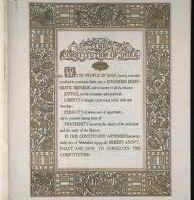 In 1934, the Indian National Congress made the demand for a Constituent Assembly. During the Second World War, this assertion for an independent Constituent Assembly formed only of Indians gained momentum and this was convened in December 1946. Between December 1946 and November 1949, the Constituent Assembly drafted a constitution for independent India. Free to shape their destiny at last, after 150 years of British rule, the members of the Constituent Assembly approached this task with the great idealism that the freedom struggle had helped produce. The result was the longest written constitution of any sovereign country in the world, which is safeguarding the democratic nature of our country for the last 65 years.
In 1934, the Indian National Congress made the demand for a Constituent Assembly. During the Second World War, this assertion for an independent Constituent Assembly formed only of Indians gained momentum and this was convened in December 1946. Between December 1946 and November 1949, the Constituent Assembly drafted a constitution for independent India. Free to shape their destiny at last, after 150 years of British rule, the members of the Constituent Assembly approached this task with the great idealism that the freedom struggle had helped produce. The result was the longest written constitution of any sovereign country in the world, which is safeguarding the democratic nature of our country for the last 65 years.
Related Posts with thumbnails for bloggerblogger widgets
Continue reading..
NCERT Notes for Class 8 | NCERT Quiz | NCERT Standard 8 - Social Science
8 Nov 2011
By
Admin
Chapter 1 :
Resources
Resources : Anything that can be used to satisfy a need is a resource. Resources are generally classified into natural, human made and human.
Natural Resources : Natural Resources are drawn from Nature and used without much modification. The air we breathe, the water in our rivers and lakes, the soils, minerals are all natural resources. Many of these resources are free gifts of nature and can be used directly.On the basis of their development and use resources can be classified into two groups, actual resources and potential resources.
Actual Resources : Actual resources are those resources whose quantity is known. These resources are being used in the present. The rich deposits of coal in Ruhr region of Germany and petroleum in the West Asia, the dark soils of the Deccan plateau in Maharashtra are all actual resources.
Related Posts with thumbnails for bloggerblogger widgets
Continue reading..
NCERT Notes for Class 8 | NCERT Quiz | NCERT Standard 8 - Science
By
Admin
Chapter 16 : Water
World Water Day : 22 March is celebrated as the world water day.The General Assembly of the United Nations proclaimed the period 2005 – 2015 as the International Decade for action on “Water for life”. All efforts made during this decade aim to reduce by half the number of people who do not have access to safe drinking water.
The amount of water recommended by the United Nations for drinking, washing, cooking and maintaining proper hygiene is a minimum of 50 litres per person per day. This amount is about two and a half bucket of water.
Water Cycle : When water circulates through the water cycle it can be found in all the three forms, i.e., solid, liquid and gas —at any given time somewhere on the earth. The solid form, snow and ice, is present as ice caps at the poles of the earth, snow-covered mountains and glaciers. Liquid water is present in
oceans, lakes, rivers, and even underground. The gaseous form is the water vapour present in the air around us. The continuous cycling of water among its three forms keeps the total amount of water on the earth constant even when the whole world is using it.
Water Table : If we dig the soil deeper and deeper, we would reach a level where all the space between particles of soil and gaps between rocks are filled with water. The upper limit of this layer is called the water table.The water found below the water table is called groundwater.
Related Posts with thumbnails for bloggerblogger widgets
Continue reading..
NCERT Notes for Class 8 | NCERT Quiz | NCERT Standard 8 - Science
By
Admin
Chapter 9. Soil
Weathering : soil is formed by the breaking down of rocks by the action of wind, water and climate. This process is called weathering. The nature of any soil depends upon the rocks from which it has been formed and
the type of vegetation that grows in it.
Classification of soils : The soil is classified on the basis ofthe proportion of particles of various
sizes. If soil contains greater proportion of big particles it is called sandy soil. If the proportion of fine particles is relatively higher, then it is called clayey soil. If the amount of large and fine particles is about the same, then the soil is called loamy. Thus, the soil can be classified as sandy, clayey and loamy.
The sizes of the particles in a soil have a very important influence on its properties. Sand particles are quite large. They cannot fit closely together, so there are large spaces between them. These spaces are filled with air. We say that the sand is well aerated. Water can drain quickly through the spaces between the sand particles. So, sandy soils tend to be light, well aerated and rather dry. Clay particles, being much smaller, pack tightly together, leaving little space for air. Unlike sandy soil, water can be held in the tiny gaps
between the particles of clay. So clay soils have little air. But they are heavy as they hold more water than the sandy soils.
Related Posts with thumbnails for bloggerblogger widgets
Continue reading..
NCERT Notes for Class 8 | NCERT Quiz | NCERT Standard 8 - Science
By
Admin
Chapter 8. Wind, Storm and Cyclones
Wind : Moving air is called the wind. The air exerts pressure. It is due to this pressure that the leaves of trees, banners, or flags flutter when the wind is blowing.
The greater the difference in pressure, the faster the air moves.
Why smoke always rises up : On heating the air expands and occupies more space. When the same thing occupies more space, it becomes lighter. The warm air is, therefore, lighter than the cold air. That is the reason that the smoke goes up. The air pressure at that place is lowered. The cold air from the surrounding areas rushes in to fill its place. This sets up convection in air.
Related Posts with thumbnails for bloggerblogger widgets
Continue reading..
NCERT Notes for Class 8 | NCERT Quiz | NCERT Standard 8 - Science
By
Admin
Chapter 7 : Weather, Climate and Adaptation of Animals
Meteorological Department : The weather reports are prepared by the Meteorological Department of the Government. This department collects data on temperature, wind, etc., and makes the weather prediction.
Rain Gauge : Rainfall is measured by an instrument called the rain gauge. It is basically a measuring cylinder with a funnel on top to collect rainwater.
Temperature : The maximum temperature of the day occurs generally in the afternoon while the minimum temperature occurs generally in the early morning.
Related Posts with thumbnails for bloggerblogger widgets
Continue reading..
Science and Technology News | October 2011
5 Nov 2011
By
Admin
On Sept. 23, European scientists in their experiment called OPERA (Oscillation Project with Emulsion-tRacking apparatus), announced that they had observed neutrinos, a class of subatomic particles, traveling faster than the speed of light — the universe’s fundamental “speed limit.” Since then the scientific community has been hotly debating its validity. But MIT professors confirmed that there’s a 98 percent chance of a systematic error while calculating the speed of neutrinos.
Related Posts with thumbnails for bloggerblogger widgets
Continue reading..
Frontline Magazine October 2011 | Online Notes
By
Admin
Wada na Todo Abhiyan is a national coalition of 3000 civil society organisations and networks in India. Recently they compiled the recommendations and proposals that came up through a year-long consultative process into a document for the next five year plan of India. Titled “Approaching Equity, Civil Society Inputs for the Approach Paper – 12th Five Year Plan” it summarises the recommendations and thematic inputs in as many as 40 categories. It pointed out that certain groups and communities faced social and economic exclusion and political marginalisation owing to their caste, class, gender, age, religious affiliation, region, sexuality, disability, marital status, education, or HIV infection and/or other stigmatised health conditions.
Related Posts with thumbnails for bloggerblogger widgets
Continue reading..
Frontline Magazine October 2011 | Online Notes
2 Nov 2011
By
Admin
Twinkling of stars is because of the swirling air or the turbulence in the atmosphere above us. The same thing happens when stars or planets are observed or imaged through a telescope. Adaptive Optics is a technique that uses optical systems in conjunction with the telescope to correct, or compensate for, the optical aberrations introduced by the intervening medium. Laser guide star and Rayleigh beacon are AOs, used in large telescopes. The latest Project Robo-AO's aim was to demonstrate a low-cost autonomous LGS AO system and science instrument, which works both in the visible and near-infrared, and is specifically designed to take advantage of modest aperture telescopes by improving their sensitivity.
Related Posts with thumbnails for bloggerblogger widgets
Continue reading..

